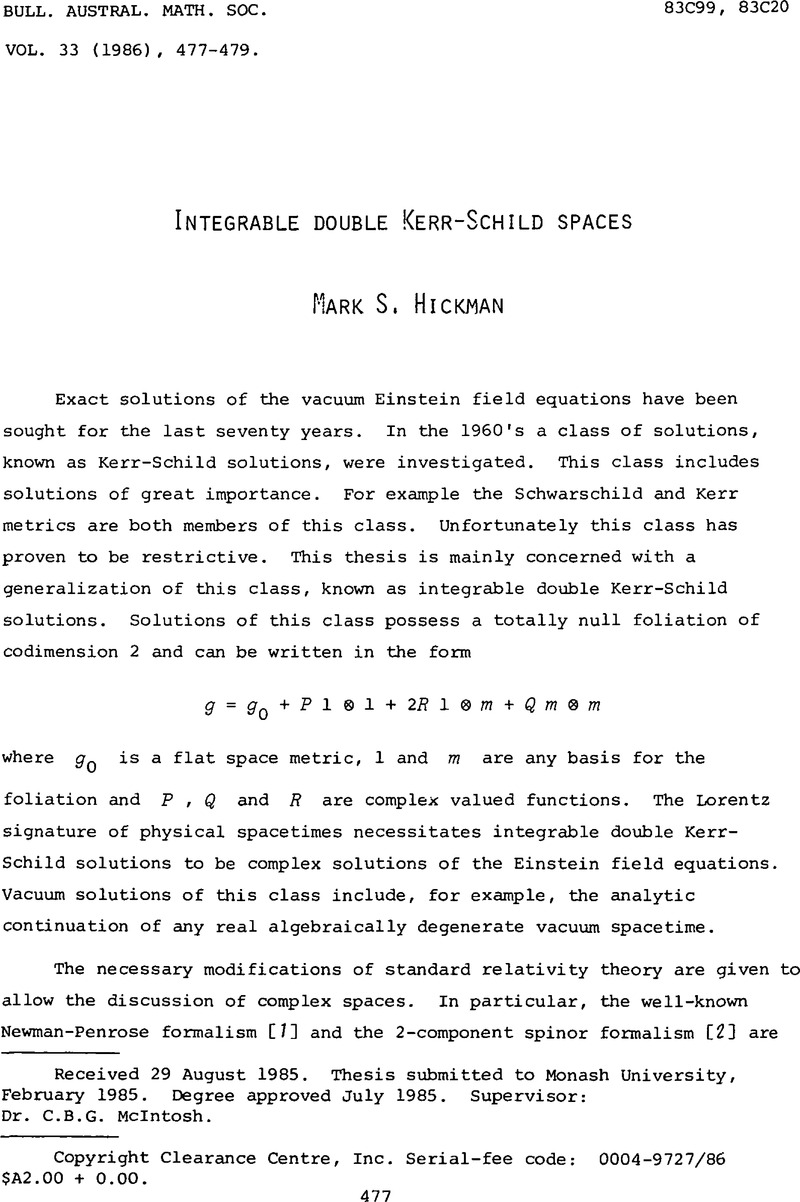No CrossRef data available.
Article contents
Integrable double Kerr-Schild spaces
Published online by Cambridge University Press: 17 April 2009
Abstract
An abstract is not available for this content so a preview has been provided. As you have access to this content, a full PDF is available via the ‘Save PDF’ action button.

- Type
- Abstracts of Australasian Ph.D. Theses
- Information
- Copyright
- Copyright © Australian Mathematical Society 1986
References
[1]Newman, E. T. and Penrose, R., “An approach to gravitational radiation by the method of spin coefficients”, J. Math. Phys. 3 (1962), 556–578.CrossRefGoogle Scholar
[2]Penrose, R., Structure of spacetime, Battelle Rencontre, (1967) Lectures in Mathematics and Physics, ed. DeWitt, C. M. and Wheeler, J. A., Benjamin, New York, 1968.Google Scholar
[3]Plebañski, J. F. and Robinson, I., “Left degenerate vacuum metrics”, Phys. Rev. Lett. 37 (1976), 493–495.CrossRefGoogle Scholar
[4]Plebañski, J. F. and Robinson, I., The complex vacuum metrics with minimally degenerate conformal curvature (Asymptotic structure of spacetime, ed. Esposito, E. P. and Witten, L., Plenum Press, New York, 1977).Google Scholar
[5]Cohen, J. M. and Kegeles, L. S., “Electromagnetic fields in curved spaces: A constructive procedure”, Phys. Lett. A47 (1974), 261–262.CrossRefGoogle Scholar
[6]Kegeles, L. S. and Cohen, J. M., “Constructive procedure for perturbations of spacetime”, Phys. Rev. D19 (1979), 1641–1664.Google Scholar
[7]Cohen, J. M. and Kegeles, L. S., “Spacetime perturbations”, Phys. Lett. A54 (1975), 5–7.CrossRefGoogle Scholar


